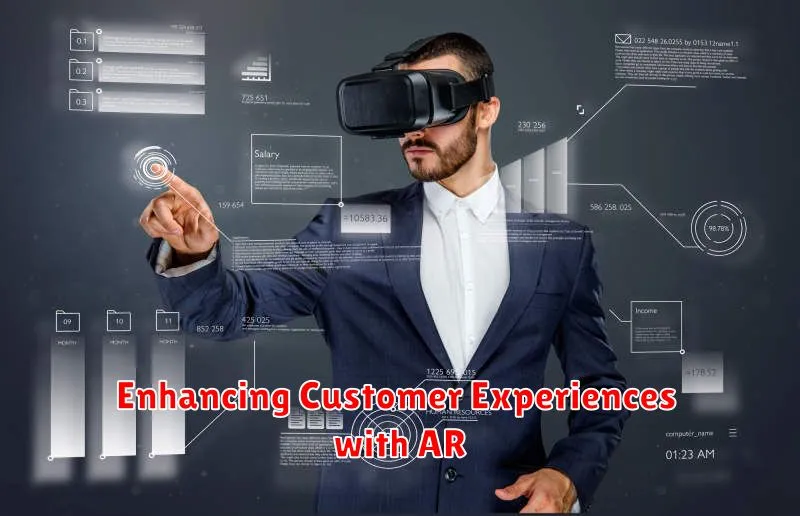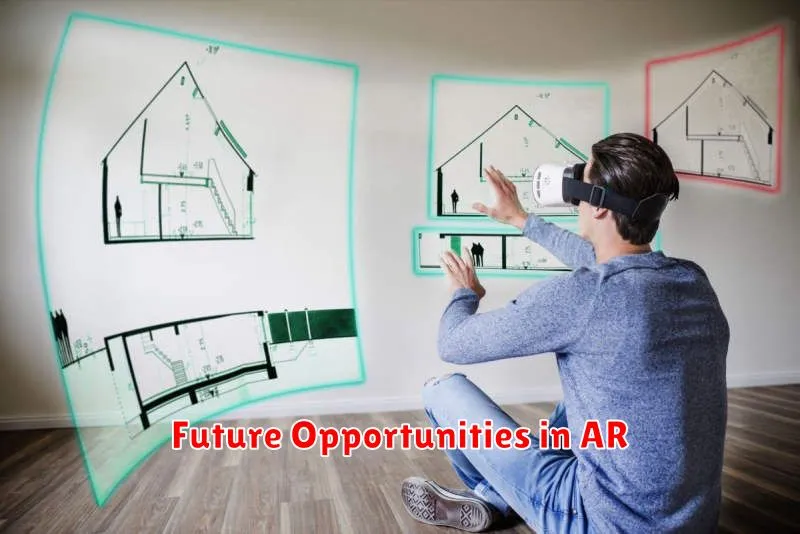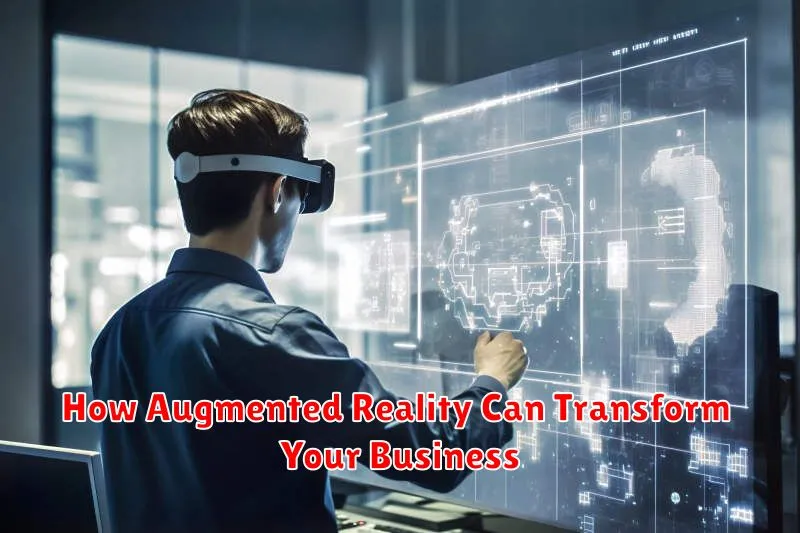In today’s rapidly evolving digital landscape, businesses are constantly seeking innovative ways to enhance operations, engage customers, and gain a competitive edge. Augmented reality (AR) is emerging as a transformative technology with the potential to revolutionize how businesses operate across diverse industries. By overlaying digital information onto the real world, AR offers unique opportunities to enhance customer experiences, streamline processes, and unlock new revenue streams. This article will explore the various ways augmented reality can transform your business, providing practical examples and insights into its powerful applications.
From retail and manufacturing to healthcare and education, the potential applications of augmented reality are vast and continue to expand. By leveraging the power of AR, businesses can create immersive and interactive experiences that drive customer engagement, improve training effectiveness, and optimize operational efficiency. Whether you are looking to enhance your marketing strategies, improve product design, or revolutionize customer service, understanding how augmented reality can transform your business is essential for staying ahead of the curve and thriving in the modern marketplace.
What Is Augmented Reality (AR)?
Augmented reality (AR) is a technology that overlays digital information onto the real world. It enhances the user’s perception of reality by adding computer-generated images, sounds, or other sensory inputs to their existing environment.
Unlike virtual reality (VR), which creates a completely immersive digital experience, AR supplements the real world with digital content. AR applications typically use a smartphone or tablet’s camera to capture the real-world view, then project digital information onto the screen.
This technology can be applied to various industries, providing engaging and interactive experiences. Common applications include gaming, retail, and education.
AR Applications Across Industries
Augmented reality (AR) offers transformative potential across diverse sectors. Its ability to overlay digital information onto the real world unlocks innovative solutions and enhances existing processes.
Key Industries Leveraging AR:
- Healthcare: AR assists surgeons with real-time data visualization during procedures and aids in medical training.
- Retail: Consumers can visualize products in their homes before purchasing, enhancing the shopping experience.
- Manufacturing: AR overlays instructions and schematics onto equipment, streamlining maintenance and assembly.
- Education: Interactive learning experiences are created through AR, making education more engaging.
These examples highlight the versatility of AR and its ability to drive efficiency, innovation, and improved user experiences.
Enhancing Customer Experiences with AR

Augmented reality (AR) offers businesses powerful tools to elevate customer experiences. By overlaying digital information onto the real world, AR creates engaging and interactive opportunities that traditional methods cannot replicate. This can lead to increased customer satisfaction and drive sales.
Try-before-you-buy experiences are a key benefit. Customers can virtually place furniture in their homes using AR apps, visualize themselves wearing clothes or accessories, or even test out makeup shades before purchasing. This reduces purchase uncertainty and encourages confident buying decisions.
AR also enhances in-store experiences. Customers can use their smartphones to scan products and instantly access additional information, such as specifications, reviews, or available colors. Interactive AR displays can further engage customers and offer a memorable shopping journey.
Using AR for Employee Training
Augmented reality (AR) offers transformative potential for employee training programs. By overlaying digital information onto the real world, AR creates interactive and engaging learning experiences.
Key benefits include enhanced knowledge retention through hands-on practice and real-time feedback. AR allows employees to practice complex procedures in a safe, controlled environment, reducing risks and costs associated with traditional training methods.
AR also facilitates personalized learning. Training modules can be adapted to individual learning styles and paced to accommodate different skill levels. This individualized approach leads to more effective training and improved employee performance.
AR in Product Visualization
Augmented reality (AR) offers a transformative approach to product visualization, bridging the gap between the digital and physical worlds. Customers can experience products in their own environment before making a purchase, fostering greater confidence and reducing purchase hesitancy.
AR applications enable users to visualize products in real-time, evaluating size, scale, and aesthetics within their intended context. This eliminates the guesswork often associated with online shopping or catalog browsing. Imagine placing a virtual sofa in your living room or trying on a pair of shoes virtually – AR makes this a reality.
Cost Implications of AR Adoption
Implementing augmented reality (AR) solutions comes with various costs that businesses must consider. The primary cost drivers include software development, hardware acquisition, and ongoing maintenance. Software development costs can vary significantly depending on the complexity of the AR application.
Hardware expenses involve purchasing AR devices like smart glasses or tablets. Maintenance costs encompass software updates, hardware repairs, and potential technical support. Additionally, employee training and content creation represent significant investments.
While initial costs can be substantial, AR can offer long-term return on investment (ROI) through improved efficiency, reduced errors, and enhanced customer experiences.
Implementing AR: Step-by-Step
Define your objectives. What do you hope to achieve with AR? Increased sales? Improved customer engagement? Clearly defined goals will guide your implementation.
Identify your target audience. Understanding your audience’s needs and tech savviness is crucial for effective AR experiences.
Choose the right AR technology. Consider marker-based AR, markerless AR, or location-based AR, depending on your specific use case.
Develop your AR experience. Work with developers to create engaging and user-friendly AR content.
Test and refine. Thoroughly test your AR application on various devices to ensure optimal performance and user experience.
Case Studies of AR Success
Examining real-world examples demonstrates the transformative power of AR across diverse industries. These case studies highlight the tangible benefits and return on investment (ROI) businesses have achieved by integrating AR solutions.
Retail: IKEA Place
IKEA Place allows customers to virtually “place” furniture in their homes using their smartphones. This reduces purchase uncertainty and has demonstrably increased sales.
Manufacturing: Boeing
Boeing utilizes AR to guide technicians through complex assembly processes. This improved efficiency and accuracy, reducing production time and errors.
Healthcare: AccuVein
AccuVein uses AR to project a map of a patient’s veins onto their skin. This enhances vein visualization, leading to more successful IV insertions and improved patient care.
Challenges of AR Implementation
While AR offers transformative potential, businesses face several hurdles during implementation. Cost is a significant factor, encompassing software development, hardware like smart glasses or mobile devices, and ongoing maintenance. Technical expertise is crucial for creating and managing AR applications, often requiring specialized developers and designers.
User experience (UX) is paramount. A clunky or confusing AR interface can deter adoption. Content creation poses another challenge. Developing engaging and valuable AR experiences necessitates high-quality 3D models, animations, and other digital assets. Furthermore, integration with existing systems and workflows can be complex, requiring careful planning and execution.
Future Opportunities in AR

Augmented reality presents a vast landscape of future opportunities for businesses seeking innovation and growth. Enhanced customer experiences are a key area, with AR enabling interactive product demonstrations and personalized shopping journeys.
Improved training and education programs can leverage AR for immersive simulations and real-time feedback. Streamlined operations are also possible through AR-powered remote assistance and maintenance solutions.
Emerging opportunities include AR integration in the metaverse, creating engaging and interactive virtual worlds. Advancements in AR hardware, such as lighter and more powerful headsets, will further unlock the technology’s potential across various industries.

